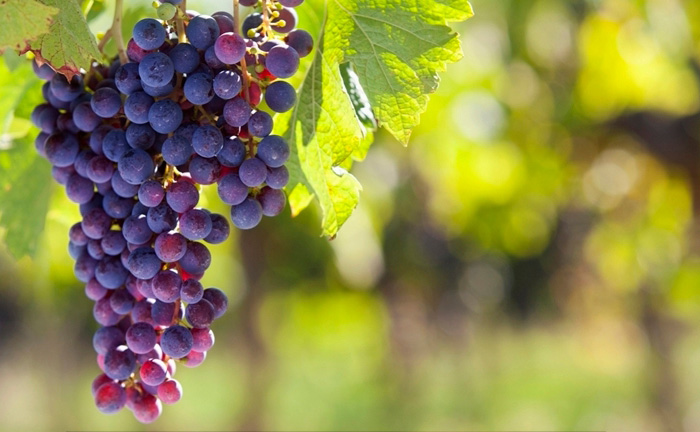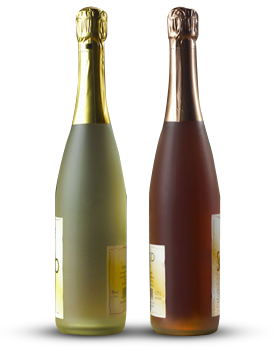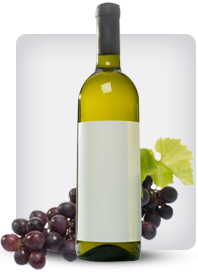

Tag: Wines
A Wine Taster’s Guide to Environmental Wines – A Look at Lageder Reds
Posted onWith today’s global attention focused on environmental health, entrepreneurs, citizen groups, and national governments attempt cooperation to improve air, water, and soil quality, to safeguard oceans and forests and especially to control climate change.
You can join the effort at your next wine tasting party by choosing wines from an eco-friendly winery like Alois Lageder. As you pour your guests a glass of these planet conscious wines, you can pass on knowledge that shows this historic Italian winery is no newcomer to environmentalism. This article looks at the aspects of eco-friendly winemaking including how winemakers create a natural balance to increase the vitality and pest and disease resistance of vines with a focus on one of the long time advocates of environmentalism in wine.
Alois Lageder
Winemaker Alois Lageder is one of many with environmental concerns, but for him, they are not recent. Born in 1950, Alois Lageder owns family vineyards located on steep Alpine slopes far from any beaten path in Alto Adige. The region borders Austria where residents speak both Italian and German and the past still dominates viticulture and winemaking. However, Alois Lageder’s visionary plan has always embraced modern technology. Instead of operating at cross-purposes, he sees nature, humans, and technology as cooperative forces with art as an expression of nature that informs people, an outlook that sends him to the top of any eco-friendly red wine club list.
Alois Lageder was named after his great grandfather who founded a winery in Bolzano in 1855. In 1934, the family acquired the Lowengang estate in Magre’ now planted with 77 acres of grapes and subsequently acquired other vineyards in prime locations in Alto Adige including the Cason’ Hirschprunn estate in 1991 planted with 79 acres.
Aspects Of Biodynamic Winemaking
Lageder grows vineyards on steep slopes from 750 to 3,250 elevations above the Adige Valley. All have been organically farmed, and the Lowengang estate is now farmed biodynamically, an even more rigorous and sustainable farming method than organic. Rather than unnatural single crop planting, Lageder cultivates multiple varieties in any given vineyard together with other plants, uses compost instead of artificial fertilizers, and fights parasites with natural predators. Lageder’s goal is to imitate the balance in nature and increase the health and vitality of the vines so they are resistant to parasites and disease.
Completed in 1996, the winery at the Tor Lowengang estate is a marvel of new technology, entirely eliminating the consumption of non-renewable fossil fuels. The winery employs solar energy, geo-thermic warmth, and natural convection currents. The building leans into a cliff that cools and warms fresh air for ventilation. A photoelectric system makes use of solar energy, delivering most of the winery’s electrical needs. And solar collectors heat water. The 50 feet tall vinification tower harnesses the force of gravity in such a way that pumps or other mechanical means for moving the grapes and must are unnecessary. The grapes and must flow down from one vinification phase to the next and end in fermentation vats arranged in a circle around this central axis. After fermentation, the wines rest in vaulted cellars until picked up by red wine club associations and distributors.
By sharing this information at your next eco-friendly wine tasting party, you can help Lageder’s wines and other environmental wines taste a little sweeter to your guests.
Find More Red Wine Articles
A Wine Lover’s Weekly Guide to $10 Wines – A Red From Montenegro
Posted onThis is our first review of a wine from Montenegro, a small country in southeastern Europe that was part of Yugoslavia. Montenegro has been producing wine for more than two thousand years, so perhaps it’s time to take a look at one of their products. This particular wine is produced from the red Vranac grape whose name means black stallion. So let’s guess that we are looking at a powerful wine. The company’s vineyard is one of the largest in Europe, containing over 10 million vines.
OUR WINE REVIEW POLICY All wines that we taste and review are purchased at the full retail price.
Wine Reviewed
Palntaze Monte Cheval Vranac, 2006 11.5% alcohol about $ 8.00
Let’s start with the marketing materials. Tasting Note: Medium garnet; leather and earth with a hint of plum and spice; earthy dried fruit flavor with a hint of spice. Serving Suggestion: Stew and casseroles. And now for my review.
At first tasting the wine was dark and oaky with round tannins. It was mouth filling and chewy but relatively short. The initial meal involved slow-cooked beef ribs and potatoes. I tasted cherries and chocolate. Its palate cleansing acidity was good because the meat was fat but this Vranac seemed to fade away. It did not pick up when I added spicy green jalapeno pepper sauce to the meat.
The second meal consisted of commercially barbecued chicken thighs in a light herb sauce and deli potato salad. The wine was powerful, but perhaps a bit too acidic. It showed dark fruit but didn’t overpower this lightly flavored dish.
The final meal was based on Merguez, North African spicy lamb sausage. The wine was mouth filling and I tasted stewed fruits. It cut the grease and, believe me, this meal was greasy. The deli potato salad muted the wine. When I added spicy green jalapeno pepper sauce this time the wine stepped into the background and its fruit was gone.
I finished the tasting with two cheeses. The first cheese was a marbled cheddar. The wine was dark and tasted of cherries and plums. It seemed well balanced. With a sheep’s milk feta cheese the wine lost a lot of its character. This cheese was too much for this wine.
Final verdict. I won’t buy this wine again. It is better than many $ 8 wines but with all the cheap wines out there, I won’t hold the presses for this one.
Types of White Wines
Posted onWhite wine owes its light coloring to the color of the grape used-golden, green, and white being the most common. However, some wineries produce white wine by using only the flesh of a red grape. White wine usually accompanies lighter meals and often pairs well with light meat or seafood.
Generally speaking, white wine has eight different varietals; these are often called “The Big Eight.” These are: Chardonnay, Pinot Gris, Sauvignon Blanc, Riesling, Gewürztraminer, Sémillon, Viognier, and Chenin Blanc. All of these wines take their name from the type of grape used in their production.
Chardonnay is the number one selling white wine varietal in America, and is extremely versatile in its pairings. Most Chardonnays come from either California or France. People often describe the flavor as “buttery” with a fruity impression. The Loire Valley in France produces most of the Chenin Blanc on the market, although vineyards in California and Argentina also produce this varietal. Its flavor and acidity can vary wildly depending upon the time of the grape harvest.
Pinot Gris or Pinot Grigio comes in two distinct types: Italian and French. The Italian version tends to be less full-bodied than that produced in other countries. Gewürztraminer, coming from a German root word indicating spiciness, pairs well with Asian foods and can have a rose-like flavor. It is produced in a variety of countries.
Riesling wines are known for their versatility; they can be paired with almost anything. The dryness of the wine is often indicated in German on the bottle. New Zealand and France are the major producers of Sauvignon Blanc wine, and the difference in geography shows in the wide variety of flavors that a Sauvignon Blanc wine can display.
Sémillon and Viognier are lesser-known varietals that hail from specific regions of France: the Sémillon grape often is grown in Bordeaux and Côtes de Gascoigne, and the Viognier in the northern Rhône regions. These grapes often figure in blends, and so, as stand-alone wines, they are much more rare and more expensive.
Find More Cabernet Sauvignon Wine Articles
Red Wine Diet – Can All Wines Help in Losing Weight?
Posted onEverybody enjoys a glass of red wine. It is one of life’s little indulgences, but sometimes, some studies tell us that they are not good for our health. In the 1990s, the idea of red wine as a way to lose weight and have a healthy heart and body has led many researchers into creating diets that include wine. Today, the red wine diet has gained the interests of so many people and has grown in popularity for several years now.
Is Wine Good For Our Body?
Wine may contain a little alcohol, but it also contains procyanidins. These types of flavanoids lower our cholesterol and keep our blood pressure at a minimum. It also helps to lose weight because it makes your tolerance for exercise increase so you can do more exercises and burn more body fat. Red wine also prevents certain diseases such as heart disease, dementia, and diabetes mellitus.
Are All Wines Good For Us?
Not all wines are healthy, especially if you choose the sweet ones. In this diet, the skill in choosing the right wine is needed. If you cannot tell if a wine has been processed too much or if it has been fermented for quite some time, then it will be hard for you to follow this diet. All you need to remember is that the good wines are usually those that come from Italy and France. Younger wines and those that are allowed to settle instead of being processed typically contain procyanidins.
With two to three glasses of wine a day, you are not only keeping your body healthy, but you are also enjoying life’s simple pleasures. Just be sure to choose the proper wine before starting this diet. And never expect instant results, because this is intended to be a lifelong diet. A glass of wine every night will make you feel fuller and healthier as you slowly reap its benefits.
Types of Red Wines Around the World – Part I
Posted onCalifornia is the only place in the world planted with just about all the better known wine grapes, producing variable qualities of wines. Elsewhere in the world, wine and grapes are location specific. While some regions have same grapes, no two regions plant identical grapes and make identical styles of wines.
This article is Part I of the three-part article series on the types of red wines in the world. The connection of grapes, wines and the regions would help the understanding of this lovely drink that we call wine.
Barbera: Indigenous to the most prominent wine region of Italy, Piedmonte, Barbera makes two styles of wine: youthful, lively, with sour-cherry flavor, or oak-aged, complex, with darker fruit, toast, spices notes. The latter is meant for aging with the maturity bringing out the best of its characteristics.
Cabernet Sauvignon: Bordeaux and California are the largest planting and production regions for the King of Red Wines. The different approach in these two regions is that in Bordeaux, Cabernet Sauvignon is almost always blended with other regional grapes, while many California producers make varietal Cabernet Sauvignon wines. The advantage of the Californian winemakers is the reliable weather, while the weather in Bordeaux dictates the quality and thus the “vintage” is so much talked about when it comes to Bordeaux reds.
Cabernet Franc: Cabernet Franc’s charms are in its fragrant aromas rich with red berries, blackcurrant leaves, and herbaceous notes, and approachable styles of tannins. With the right terroir – combined elements of the natural environment, for examples, Napa and Sonoma, Cabernet Franc could produce dark fruit, well-structured and complex full-bodied single varietal wine.
Carmenère: Originated in the Bordeaux region of France as a blending grape but never playing a major role, Carmenère has found its stage to shine in Chile as a single varietal wine. Well, there was a little hiccup when it was mistaken to be Merlot in the vineyard and made into wines labeled Merlot, but that confusion has since then be cleared. The Chilean Carmenère offers velvety texture, low acidity and almost-sweet fruit flavors, as long as the grapes are ripen properly, not harvested unripe.
popular posts
-

Top Northern Rhône Syrah 2025: A Vintage of Finesse and Structure
11-27 2025As the wine world turns its gaze towards the upcoming releases, the 2025 vintage from the Northern Rhône is already generating palpable excitement. For Read More
-

The world of wine is vast and can be intimidating. For enthusiasts and novices alike, wine subscription boxes have emerged as a premier way to explore new regions, varietals, and boutique wineries from the comfort of home. As we look ahead to 2025, the market is more sophisticated than ever, offering curated experiences tailored to every palate and budget. We’ve uncorked the top contenders to bring you the best wine subscription boxes of 2025. 1. Winc: The Personalized Pioneer
11-22 2025Winc remains a leader in the personalized subscription space. Their model starts with a detailed palate profile quiz, ensuring your first box is tailored Read More

